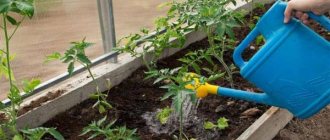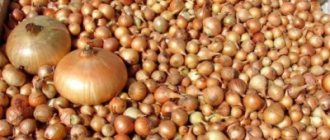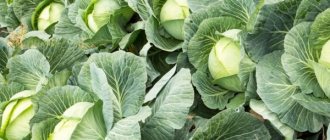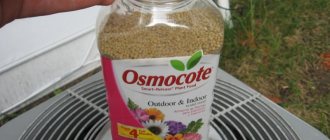Which carrot variety should you choose?
Inexperienced gardeners choose carrots based on price, beauty of packaging, name, advice from a neighbor, reviews from vegetable growers, and other dubious criteria. In fact, carrot varieties must be selected according to agrotechnical characteristics.
All varieties of carrots are divided into categories. When choosing a suitable variety, take into account the following criteria:
- Selection. There are domestic and foreign varieties. The first ones are cheaper and are zoned in specific Russian regions. Foreign varieties have serious commercial and agrotechnical advantages, but their adaptation to the local climate must be taken into account.
- Terms of ripening. There are three categories of carrots: Early. For quick harvest. Ripens in June-July. Not for winter storage.
- Mid-season. They ripen in the fall. This is the sweetest and juiciest carrot. Well kept.
- Late. For long-term winter storage. They are distinguished by large root crops and are not inferior in sweetness to mid-season varieties.
The sweetest varieties of carrots are Orange Buddy, Children's Joy, Karotan, Emperor, Nastena, Krasna Maiden, and Beloved.
Among carrots there are also varieties of unusual color and shape:
- Carrots with white, yellow, red and purple roots are Belgien White, Yellow Stone, Queen of Autumn and Dragon, respectively.
- With small and round root vegetables - Parisian carotel and Round baby.
- Without core - Longe Rote and Karotinka.
WHERE CARROTS CAME FROM
It is believed that the birthplace of carrots is the Middle East and Asian countries, primarily Syria and Afghanistan. Here you can still find its wild root vegetables, colored yellow, bright blue, green, purple, dark brown and cream. Some types of carrots were used for food by the first tribes in Ancient Egypt.
Carrots came to Russia from Europe in the middle of the 14th century. Initially, the best varieties were brought from Holland and France. But in the middle of the 18th century, the first domestic varieties of carrots were created: Nantes, Danverskaya, Vorobyovskaya.
They quickly spread throughout Russia, and by the middle of the 19th century, carrots were already growing in every estate. They also began to grow carrots on peasant plots.
Conditions for growing carrots in open ground
Carrots cannot be called a whimsical and demanding crop. But there are a number of conditions, without which it is impossible to obtain the desired harvest. Carrots will grow under almost any circumstances, but whether they will be large, tasty, shelf-stable, and filled with vitamins depends on the growing conditions.
Site requirements
Carrots are grown on flat areas without slope. Landing site requirements:
- Illumination. Choose a well-lit area. With a lack of sun, carrots grow poorly - the tops are stunted, and the root vegetables are tonic. The sun should fall on the site throughout the day. With shading, even temporary, yields decrease and the taste of root crops deteriorates.
- The soil. Preference is given to loose neutral or slightly acidic soils (pH 6–7). Acidic and alkaline soils are strictly contraindicated. The crop grows best on loamy soils with a high sand content, or on sandy loam soils. In dense loams, carrots grow small and rot during storage. When growing varieties with long roots, deep plowing is necessary. The soil should be well aerated and moisture-absorbing. With high humidity and lack of oxygen, carrots grow tasteless and the risk of fungal diseases increases.
- Predecessors. Carrots grow well after tomatoes, cucumbers, cabbage, onions, garlic, potatoes, and grain crops. You cannot plant carrots immediately after dill, parsnips, caraway seeds, fennel, parsley, carrots and all umbelliferous plants.
- Neighbours. The yield of carrots increases if peas, radishes, and tomatoes grow nearby.
Carrots are planted on the site no earlier than after 3-4 years. If you replant a crop in one place:
- Productivity is falling.
- Product quality is deteriorating.
- The incidence is growing. Root crops and above-ground parts are damaged by pests and diseases - Alternaria, carrot fly, aphids, nematodes and others.
The following areas are absolutely not suitable for carrots:
- with a strong slope;
- overgrown with weeds;
- on which unfavorable predecessors grew - especially tobacco and sunflower.
Preparing the soil for planting carrots
Site preparation begins in the fall. Over the winter, all fertilizers and additives will be absorbed and give maximum effect. The ideal soil for carrots is air- and moisture-permeable, loose and fertile, without rhizomes and stones.
Features of preparing soil for carrots:
- The soil is dug up in the fall, removing everything unnecessary from it - stones, rhizomes, solid debris.
- Digging depth is 1.5 shovels. Large digging horizons allow root crops to grow deeper. Also, deep digging makes it easier to harvest carrots - they are easier to pull out.
- If the soil is heavy loamy, add peat or sand for autumn digging - 1 kg per 1 sq. m. m.
- Manure or humus is added to excessively sandy soils.
- Humus is added to low-fertility soils in the fall - 6-8 kg per 1 sq. m. m. But you can add organic matter in the spring - before sowing.
- Chalk or lime is added to acidified soil in the fall - 1 cup per 1 square meter. m.
- In spring, you don’t have to dig up the soil - just loosen it and level it.
In loose soils, carrots grow straight and beautiful, in dense soils they grow crooked and deformed.
The amount of fertilizer applied to the soil depends on its type. So, for example, in clay soils, in addition to peat and sawdust, which loosen their structure, per 1 sq. m are contributed per season:
- coarse sand – 0.5 buckets;
- humus or compost – 5 kg;
- wood ash – 300 g;
- lime – 500 g (for acidic soils);
- mineral fertilizers – 2 tbsp. l.
Each type of soil has its own fertilizer recipe. Before applying fertilizers, it is necessary to determine the density and acidity of the soil. Gardeners have a lot of methods for determining these indicators - from folk signs to litmus tests.
The main reasons for poor growth of carrots in the garden
Sometimes gardeners encounter some problems when growing carrots. Therefore, you need to understand the reasons why the crop grows poorly.
Proper watering affects a lot of things. If the soil under the crop is not moistened correctly, this can lead to negative consequences:
- waterlogging of the soil leads to the fact that the crop grows ugly: carrots are clumsy in most cases;
- shallow watering leads to the fact that the crop grows not sweet and even tastes bitter;
- Horned carrots occur due to uneven watering.
In the absence of fertilizing, carrots grow pale and covered with white hairs. If the crop goes wrong, this may mean that the wrong planting site has been selected for the plant, in particular, the rules of crop rotation have been violated. Also, it is possible that the gardener did not thin out the crop in a timely manner. Sometimes carrots go to waste if there are problems at the sowing stage.
If the plant falls over and no longer grows, this may indicate the occurrence of diseases or pests.
When the seedlings turn yellow and lean toward the ground, this indicates the presence of pests or an infection that has affected the crop.
Timing for planting carrots in open ground with seeds
The timing of sowing depends on the variety, climate and the purposes for which carrots are planted. The packaging usually contains information about the duration of ripening - this is what they use when calculating the sowing time.
When to sow carrots before winter?
To get an early carrot harvest - several weeks earlier than the earliest carrots ripen, they are sown before winter. For this purpose, only early varieties are used. The best time for sowing is mid or late autumn. Pre-winter sowing is practiced mainly in regions with warm winters. If the winters are harsh, then even a thick layer of covering material will not help - the seeds will freeze.
Autumn sowing is carried out taking into account the characteristics of the local climate. We need to plan in such a way that after sowing there can be no further warming. If the seeds manage to hatch and sprout before winter, they will be destroyed by frost, and there will be no seedlings in the spring. It is recommended to move sowing further away - towards the very end of autumn.
For autumn sowing, only winter-hardy and zoned varieties are suitable - for example, “Moscow winter” carrots.
In autumn, seeds are sown when the soil temperature is below +5 °C. Sowing depth is 2 cm. The top of the plantings is mulched with humus - a layer of 3-4 cm. If there is insufficient snow cover, the plantings are covered with spruce branches - a layer of up to 0.5 m.
Planting carrots in spring in open ground: timing
In central Russia, carrots are sown no earlier than the end of April - by this time the probability of night frosts becomes minimal.
The timing of sowing depends on the timing of ripening:
- early varieties are sown on April 20-25;
- mid-season varieties are sown before May 5;
- late – from April 15 to June 1.
In the south of Russia, the dates are completely different; here, early carrots can be sown starting in mid-March, and in mid-June, carrots can be sown for the second harvest. In July, only early varieties and hybrids are sown. Sowing must be done no later than July 20. In spring, seeds are sown as early as possible - as soon as the soil warms up to +8°C, during this period there is a good supply of moisture in the soil.
Dates according to the lunar calendar
Lunar phases are associated with the movement of juices in plants. On a waxing moon, the juices move upward, on a waning moon, downward, to the roots. Therefore, it is recommended to plant root vegetables, including carrots, on the waning moon.
Carrots planted closer to the full moon grow long; by the new moon they grow strong, thick, but shorter. Table 1 shows favorable and unfavorable days for planting carrots according to the Lunar calendar for 2021.
Table 1
| Month | March | April | May | June | July | August | September | October | november |
| favorable days | 10-12, 15-17, 23-25, 27-30 | 2-9, 11-15, 24-27, 29-30 | 1-4, 12-14, 21-23 | 9-11, 18-20 | 25-31 | — | 17-19, 26, 27, 30 | 4-7, 15-17, 19-21, 23-25, 27 | 1-3 |
| unfavorable days | 5, 6, 21 | 5, 19 | 5, 19 | 3, 4, 17 | 2, 3, 17 | 1, 5, 16, 30, 31 | 14, 15, 28, 29 | 14, 28 | 12, 13, 26, 27 |
Regionality
The dates for planting carrots are adjusted for each region. We have to take into account climatic features - when the soil warms up and when recurrent frosts stop. Table 2 shows the features and timing of planting carrots in different regions.
table 2
| Region | Climate Features | When to sow carrots? | What varieties are suitable? |
| Central Russia | Unstable spring. The snow melts in March or April. Frosts are possible after the snow melts. | The best sowing time is the last ten days of April. The landmark is the flowering of aspen and birch trees. Sowing for the second harvest - June, autumn sowing - late October or early November. | Early, middle and late. |
| Ural | Snow melts in mid or late April. There may be frosts in spring. Cool weather and rain may persist into the summer. | Planted in early May. In summer - in June, in autumn - in October. | Early, middle and late. |
| Siberia | Short summer. | Sowing after significant warming - usually in May. | Mid-season varieties are most suitable. |
| Southern regions | Short winter. There is no stable snow cover. The snow melts already in February. | In the spring, sow as early as possible, in March - while the soil is moist. Summer planting is in May. Before winter, carrots are sown at the end of November. | Early, middle and late. |
Mulching a vegetable
How to grow large carrots and at the same time eliminate the risk of drying out the soil, the danger of pest invasion, and also significantly reduce the amount of weeding and loosening? For this purpose, there is a technology for covering the soil with mulch, and the technique itself is called “mulching.”
How to mulch a carrot bed? The most common way to mulch a garden bed is to cover the space between the rows of planted vegetables with hay, straw chaff, or sawdust. The latter option is preferable, since covering with sawdust retains moisture longer and provides a more reliable shield against the invasion of cabbage grass and other pests.
Covering the soil with sawdust has another important advantage over grass flooring - weeds do not grow through it, while dried grass itself may by default have mature and ready-to-germinate seeds that will grow when in contact with moisture. Small wood chips have the same properties, along with sawdust.
It is recommended to mulch carrots when the outer part of the plant reaches 14-16 cm, and the vegetable itself is about 7-8 cm in diameter at the widest part of the root. Is it possible to mulch late varieties of root crops? It is not only possible, but also necessary, since the shelter retains the temperature it receives from the sun during the day for a long time, and as a result, the root crops are juicy and not cracked.
On forums there are often complaints like the following: “I mulch vegetables according to all the rules, but the vegetables wither, the tops fall off, and the end result is a horned or otherwise ugly carrot that lacks sweetness.” An important condition before carrying out the procedure is drying the material. Whatever mulching is done, the covering should not rot and thus serve as a habitat for the proliferation of harmful microorganisms. And the secret of withering, falling tops is rotting of the root, to which oxygen does not reach through the dense crust of damp mulch. That's all the secrets of proper mulching.
Preparing carrot seeds for planting
Carrot seeds can “sit” in the soil for up to three weeks before sprouting. They contain essential oils that prevent swelling and delay germination. To speed up germination, it is recommended to treat the seeds before planting.
Carrot seeds retain high germination rate - 50-70% for 3-4 years.
Treatment of carrot seeds before planting
If purchased seeds are used - granulated or glazed, they do not need to be processed. They have already undergone pre-sowing treatment, are covered with a special nutrient layer, and cannot be soaked - otherwise the shell will dissolve. Such seeds are sown dry.
If the seeds are bought from hand or collected from your own, they will have to be prepared:
- Sorting. The seeds are placed in a saline solution for 5 minutes. Specimens that float to the surface are discarded - they are not viable.
- Heat treatment. The seeds are soaked in hot (50-60°C) water. After 20 minutes, they are transferred to cold water for 2-3 minutes.
- Processing in a stimulator. Seeds that have passed testing are kept in a cloth soaked in a growth stimulant - Zircon or Epin. Exposure time – 24 hours.
- Drying. After soaking, the seeds are dried until they flow and are immediately sown.
We invite you to watch a video in which an experienced gardener will share the secrets of preparing carrot seeds for sowing:
Do I need to germinate carrot seeds?
To speed up germination, some gardeners do this:
- Spread the seeds on a damp cloth. Maintained at temperatures from +20 to +24°C.
- In 5-6 days the seeds will swell. This is enough - the seeds should not germinate. If sprouts appear, they will be damaged during planting and there will be no seedlings.
- Before planting, the seeds are dried until they flow and are sown immediately.
The old fashioned way:
- The seeds are poured into a linen bag.
- They are buried in early spring to a depth of 20-25 cm. The soil during this period should be moist, not heated.
- Keep the seeds in the soil for two weeks. During this time, they swell and acquire increased immunity.
- Before sowing, a bag of seeds is taken out of the ground. The seed material is laid out on paper or cloth to dry. When they are dry, you can start sowing.
Features of watering
Carrots tolerate drought well, but to obtain sweet and large root crops, this crop must be watered regularly. Especially during dry seasons. Abundant watering is carried out during seed germination and root formation.
See also
How to weed carrots correctly and quickly
Read
However, you need to remember that carrots will not grow in waterlogged soil. Excess moisture will lead to leaching of minerals, compact the soil, and reduce the supply of oxygen to the roots. Water carrots once a week, in drought - 3 times every 7 days. A bucket of water is used per 1 square meter of land. A week before harvest, watering is completely stopped.
Proper weeding
Carrots grow very slowly - almost the whole summer. During this period, many weeds manage to grow in the garden bed. The garden needs to be weeded regularly. During weeding, weeds are pulled out by hand and removed from the garden bed.
After watering or rain
Many gardeners prefer to weed after moistening the soil. Weeds are easier to remove from damp soil. Weeds are pulled out by hand, and the ground is loosened with a hoe (hoe, hoe).
Before watering
The soil can be weeded before watering. Weeds removed from the soil will dry out in the aisles from the scorching sun. Weeds near carrots must be pulled out by hand.
Thinning
Carrots need to be thinned out twice, as planting that is too thick will not allow the growth of large root crops. The crop is thinned out for the first time after several leaves appear. Before the procedure, the ground is watered. It is easier to pull out a seedling from damp soil. During thinning, the sprouts need to be pulled straight up from the ground.
The second thinning is carried out when the tops grow to 10 centimeters. To obtain long and narrow root vegetables, leave a distance of 3 centimeters between adjacent vegetables. The carrots will turn out large if the interval between plants is 5-7 centimeters. Seedlings pulled out of the ground are thrown away.
Sowing carrots in the ground
The beds are watered with hot water before sowing. It is advisable to dissolve Fitosporin in it. Then the soil is covered with a film so that it retains moisture and warms up.
Distance between seeds
Carrot seeds are buried 2-3 cm, having previously made shallow grooves - 2-3 cm deep. You can’t sow deeper - the germination period is already long and will be pushed back even further. And if you sow less deeply, you may lose seedlings altogether. The recommended interval between adjacent seeds is from 1 to 3 cm, the optimal distance is 2 cm.
The furrows in which the seeds are sown are watered and then sprinkled with:
- wood ash is a potash fertilizer;
- tobacco dust - it saves from pests.
Carrot seeds are very small, so sowing them is a painstaking and slow process. If you sow hastily and generously, you will subsequently have to pull up the carrots - the seed material will be wasted. In addition, when thinning overly thickened plantings, thin shoots can be damaged.
Scheme for planting carrots in open ground
The scheme depends on the scale of planting:
- When industrially grown, carrots are planted in double rows, with 15-20 cm between them. Between adjacent ridges - 40-50 cm.
- On a small scale, the width of the bed is 1.3-1.5 m. The rows are made perpendicular to the long side of the bed. Due to the small width of the bed, the rows are convenient to weed, water and thin out from any side. The distance between the rows is 15-20 cm. Sides are made along the edge of the beds so that water does not flow down when watering.
Do I need to water carrots after planting?
The sown seeds are covered with fertile soil and compacted with hands to ensure good contact with the soil. Watering crops depends on the weather:
- Carrots are planted early, while the soil is still moist, and if it is damp and cool outside, there is no need to water the plantings.
- In warm, sunny weather, it is recommended to lightly water the crops. But this must be done carefully and moderately - so as not to provoke the formation of a crust. It is advisable to mulch the crops after watering, then a crust will definitely not form, and the seedlings will easily break through to the surface.
To preserve moisture and accelerate the emergence of seedlings, the crops are covered with film or spunbond. The latter is preferable - it may be too hot under the film and the seedlings will burn. As soon as the shoots appear, the covering material is removed.
Light watering - sprinkling, repeated daily until shoots appear. When the carrots sprout, the rows are loosened and watering is halved. Until the rows are covered by tops, they are regularly loosened to prevent them from becoming overgrown with weeds.
How long does it take for carrot seeds to sprout?
Under favorable conditions - if the weather is warm and the seeds were planted soaked, seedlings will appear in about a week. At temperatures below +12 °C, the germination time doubles - the first shoots will appear no earlier than in two weeks.
Carrots: growing and care. Landing diagram
Carrots: growing and care. Landing diagram
A planting scheme is the planting of seed according to a certain algorithm. Always take into account: the dimensions between the rows and the length of the beds, planting depth. Such precision is necessary in order to get a good harvest. If you plant vegetables for yourself, then you need to make small beds. For planting for industrial purposes, it is necessary to use special equipment, which means the sown area must be larger.
If cultivation occurs in spring or late autumn, then the seeds need to be planted deeper. In the greenhouse you need to pay attention to the gaps between seedlings.
The main thing: Observing the correctness of the scheme determines how the vegetables will sprout, ripen, and what costs will be appropriate for care.
Caring for carrots in open ground
In order for large and beautiful carrots to grow, rich in vitamins and other useful substances, they must be looked after throughout the entire growing season - watered, loosened, fed, and thinned out if necessary.
Thinning
In order for root crops to grow large, you need to provide them with space to grow. If you do not thin out the plantings in time, the carrots will grow thin, and some plants will not form root crops at all.
Thinning time:
- The first time the plantings are thinned out as soon as the sprouts have two true leaves. They mercilessly pull out all the excess carrots. There should be 2-3 cm between neighboring plants.
- The second and last time the carrots are thinned out is a month later - by this time the tops should grow to about 10 cm in height. By the second thinning, the plants are quite large, it is easier to pull them out by hand, without any equipment. Now the distance between neighboring plants should be 5-7 cm. If the variety has cylindrical root crops, then the intervals are smaller, if conical - more.
How to thin carrots:
- Manually. They dig up unnecessary shoots carefully - the movement should be directed perpendicular to the surface. It is important not to damage the plants that are left to grow.
- Scissors. Using a tool, they pull out weak, short and thin plants. Instead of scissors, you can use garden tweezers - they are suitable for both the first and second thinning. To make it easier for plants to be removed from the soil, the soil should be moistened before thinning. The method requires patience - each plant must be grabbed with tweezers and carefully pulled out.
In addition to thinning, you have to weed the seedlings. Seeds take a long time to germinate, but weeds grow quickly, and when young plants appear, they are mixed with weeds. The seedlings are so small that you can only remove the weeds by hand - you can’t work with a hoe here.
The torn-out excess is not left on the beds - the carrot fly immediately flies to its smell. All torn plants must be collected and taken to compost. They cannot be replanted - torn carrots do not take root well, and even if they grow in a new place, they produce branching root crops. After uprooting, the soil is compacted so that insects do not lay eggs in the stirred up soil.
They thin out the carrots during the day, and in the evening the carrot fly actively flies to the smell of the torn carrots.
Watering carrots
Watering affects not only the size of root crops, but also their taste, juiciness and sweetness. Carrots are watered throughout the growing season. The soil is moistened to a depth corresponding to the expected length of the root crop - about 30 cm. If there is not enough moisture, the root crops will be sluggish and the taste will be bitter.
Irrigation features:
- Moisturizing is especially important at the initial stage of the growing season - while the plant has a weak root system. As it grows, the frequency of watering decreases. After watering, the rows are loosened, simultaneously pulling out weeds.
- Watering frequency: every 3-4 days.
- Watering rate is 30-40 liters per 1 sq. m. For medium-sized root crops, 10-20 liters per 1 square meter is enough. m.
- At the end of the growing season, 10 liters per 1 square meter is enough. m. Watering frequency – once every 1.5-2 weeks.
- Watering is stopped 2 weeks before harvesting.
If changes in humidity occur, from soil drying out to excess moisture, root crops crack and their shelf life deteriorates. Improper watering - violation of norms and frequency, leads to deformation of carrots - it grows crooked, with a large number of small and thin roots along the entire length of the root crop.
Top dressing
During cultivation, carrots should be fed two to three times. The development and immunity of plants, the commercial quality and keeping quality of root crops depend on the timely application of fertilizers and the correctness of their composition. The periods and composition of fertilizing are in Table 3.
Table 3
| Feeding period | Compound |
| The phase of formation of 2-3 true leaves. First thinning. | It is advisable to apply fertilizers in liquid form. For a bucket of water take 30 g of superphosphate, the same amount of potassium salt and 25 g of nitrate. The volume is designed for 10 sq. m beds. The second option is diluted bird droppings (1:15). |
| 3 weeks after the first feeding | Same as the first feeding. The goal is to increase root crops. |
| 3 weeks after the second feeding | Nitrogen is excluded from the composition. For 10 liters – 40 g of superphosphate, 25 g of potassium salt. |
If carrots are stunted in growth, it is recommended to water them with complex mixtures - for example, Crystallon - 1 tbsp is diluted in a bucket of water. l of the drug. You can also feed carrots with Kemira, Nitrophoska, Mortar. Next time, the dose of the drug is increased by 1.5-2 times.
To get large and good carrots, after July 15 they are not fed with nitrogen fertilizers.
Feeding rules:
- Before applying fertilizer, the beds are watered.
- The last fertilizing is carried out a month before harvesting. This reduces the nitrate content in root vegetables, adds sweetness and juiciness to them, and improves keeping quality.
Control of diseases and pests of carrots
The most common problems faced by carrots are:
- White rot. Occurs due to an excess of nitrogen fertilizing. Products containing copper can help in this situation.
- Bacteriosis. To get a healthy harvest, seeds are collected exclusively from healthy fruits.
- Felt disease. This is a fungal infection. As a rule, it appears during the storage period of the culture. Affected specimens are discarded. Otherwise, the entire crop may be infected.
- Gray rot. Disinfection will help deal with this fungal problem.
- Fomoz. To prevent this problem from occurring in the garden, carrots are harvested in dry weather. Damaged or limp root crops must be destroyed. It is also necessary to follow the rules of crop rotation.
- Hogweed. In the fight against pests, the main thing is to carry out timely harvesting and remove weeds.
- Hawthorn aphid. It is not recommended to plant the crop near hawthorn.
Harvesting carrots
In central Russia, carrots are usually chosen after October 10. When carrot leaves turn yellow, it’s time to harvest. It is recommended to carry out cleaning on the waning moon.
Cleaning and storage procedures:
- The extracted root vegetables are cleaned from the soil. They cannot be washed or wiped with rags - the thin skin can be damaged.
- The root crop is dried in the sun. If the weather is rainy, then the carrots are moved to a well-ventilated area. The tops of dried root vegetables are cut off.
- The greenish tops are cut off - they contain solanine; carrots become bitter during storage. The sections are disinfected with a solution of potassium permanganate. After waiting a few days so that the cut area becomes crusty, the root vegetables are transferred to the basement for storage. There is such a storage option - cutting off the tops of root crops. If you cut off the top bud, the carrots do not germinate, they remain fresh.
- Store carrots at a temperature of +1°C and at a humidity of 90–95%.
- Carrots should not be stored in an airtight container. If carrots are placed in plastic bags, holes are made in them.
- Before storing, root vegetables are dipped in a clay mash, dried and stored.
- Another storage option is to put carrots in boxes, layering them with moss. The boxes are covered with tarpaulin.
If you approach the issue of sowing correctly, there is nothing difficult in growing carrots. Thanks to the original ideas of gardeners, you can skip the thinning stage and significantly simplify the agricultural technology of this root crop.
0
0
Copy link
Cleaning and storage
Harvesting carrots is carried out in several stages. First, you start pulling it up in the summer for food, and the root vegetables remaining in the ground receive more nutrition and gain mass more intensively. Then the early varieties of carrots are harvested, which ripen in July. In August, it is the turn to harvest mid-season carrots, and late varieties, intended for long-term storage, are dug up from mid to late September.
When to dig up carrots? Choose a warm and dry day for this and get started. From light soil, root crops are pulled out by the tops, and from dense soil, carrots have to be dug out with a shovel.
- Tomatoes in a greenhouse: planting, care, difficulties
After carrots are removed from the ground, they are sorted, setting aside damaged roots for processing. For carrots suitable for storage, the leaves are cut off right down to the head, the roots are placed under a shed to dry for several days and then stored.
We devoted a section to methods of storing carrots in a special article, which describes in detail how to store carrots, beets and other vegetables in the winter. It is best to store carrots in a basement or cellar in wooden or plastic boxes, sprinkling the root crops with sand so that they do not come into contact with each other. You can use moss instead of sand. You can sprinkle the carrots with crushed chalk and onion peels - chalk and onion peels counteract the development of putrefactive processes.
There is another way to store carrots - glazing with clay. The clay must be diluted with water until it becomes thick with sour cream, then each root vegetable is dipped into this mash, placed on a wire rack to dry, and then carefully lowered into the cellar. If you store clay-coated carrots at a temperature of about 0 ºC in a dry cellar, they will remain juicy and fresh until spring.
Variety selection
Carrot varieties are divided into early, mid-season and late. There are hybrids that have taken the best characteristics from their “parents”. They are characterized by high yield and disease resistance. There are varieties with the usual orange, exotic purple and even white coloring.
The choice is varied and can satisfy the needs of every gardener.
The table contains the best varieties and hybrids of fruitful and sweet carrots.
| Name | Ripening time, days | Weight, g | Length, cm | Coloring | Form |
| Nantes-4 | 80-120 | 50-60 | 12-16 | Orange | Cylindrical |
| Dunyasha | 70-90 | 60-80 | 14-16 | Orange | Cylindrical |
| Emperor | 120-135 | 90-100 | 25-30 | Bright orange | Cone-shaped, pointed |
| Queen of Autumn | 120-130 | 85-230 | 18-23 | Orange | Cone-shaped |
| Red giant | 120-140 | 80-140 | 25-35 | Red-orange | Cone-shaped |
| Baltimore F1 | 95-100 | 65-140 | 20-25 | Rich orange | Cylindrical |
| Purple Elixir F1 | 65-70 | 60-100 | 18-20 | Purple-brown skin, orange flesh | Cylindrical |
| White sugar F1 | 90-110 | 70-110 | 20-23 | White | Cylindrical |
The photo shows the carrot variety Purple Elixir F1.
Sowing technology
The selected area is loosened to a depth of 10-15 cm, then leveled and long furrows 5 cm wide and 2 cm deep are formed. The row spacing is 25-30 cm.
To obtain uniform shoots, the seeds are planted to the same depth.
Experienced gardeners advise making a hard substrate. To do this, the furrows are leveled and compacted with timber. Then they spill with water and sow the seeds at intervals of 1.5-2 cm. To facilitate the process, 1 tbsp. l. planting material is mixed with a glass of river sand, the resulting mixture is divided into 3 equal parts and sown each 1 m².
The seeds are covered with loose sifted soil or peat mixed with sand for better contact with the ground and to ensure an influx of moisture.
The beds are not watered after sowing so that the seeds do not move into the deep layers of the soil. To retain moisture, the area is covered with a thick film, which is removed after germination.
Pest Elimination
Root crop affected by carrot fly
The main pest of root crops is the carrot fly. She lays eggs in the ground next to the plant. One of the reasons for the pest invasion is planting carrots in the same place every year. The pupae transform into small worms and eat away the passages in the vegetable, along which rot appears. It is recommended to treat the seeds with azotofin or phytocide before sowing.
If crop infestation poses a threat (more than 1 larva per 20 plants), insecticides are used. Effective folk remedies: wormwood solution, planting onions and garlic in close proximity to carrots, the smell of which repels insects.
Naked slugs damage root crops in cloudy weather or at night. Large amounts of precipitation and dampness contribute to their mass reproduction. They eat carrots by gnawing deep holes in them. To prevent the appearance of the pest, it is recommended to drain the beds and the surrounding area and get rid of weeds in a timely manner.
Types of slugs and their harm to carrots
The fight against slugs comes down to treating the summer cottage with a solution of lime and wood ash. Superphosphate and saline solution (100 g of table salt per 10 liters of water) give good results. Since the slug hides during the day, spraying is carried out at night.
The fall armyworm is a butterfly that can breed large offspring of caterpillars that parasitize carrots. They gnaw the stems at the base of the plant and eat root crops. Early sowing of crops is less susceptible to the spread of the pest, and timely destruction of weeds reduces its numbers.
During the period when the armyworm lays pupae, it is useful to sprinkle. Heavy watering can destroy up to 90% of the larvae. If necessary, the biological preparation Lepidocide or peritroid agents are used to treat the area against caterpillars.











